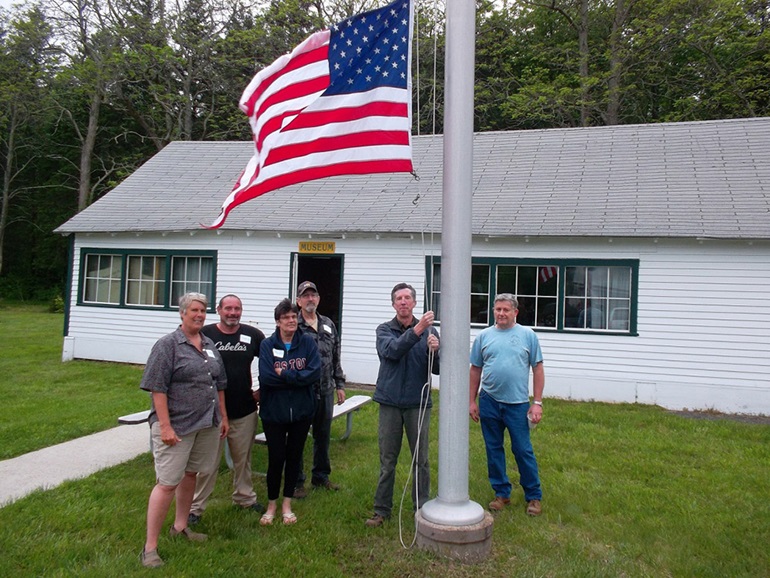Press Releases

08/06/2021
Eighty Eighth Anniversary Celebration of the Civilian Conservation Corps Reunion to be Held August 8
(STAFFORD SPRINGS)—A reunion of Civilian Conservation Corps (CCC) alumni, family, and friends in celebration of the 88th anniversary of the founding of the CCC will be held on Sunday, August 8th, at 1 p.m. at the Connecticut CCC Museum at 166 Chestnut Hill Rd. (Rt. 190) in Stafford Springs.
All who are interested in the CCC are welcome to attend. Marty Podskoch, author of Connecticut Civilian Conservation Corps Camps: Its History, Memories and Legacy of the CCC, will give a brief history of the CCC camps in Connecticut, and CCC alumni, family and friends will share their stories of their CCC camp experiences both in Connecticut and other states. Refreshments will be served, and pictures of the CCC camps will be available to view.
The CCC began on March 31, 1933, under President Roosevelt’s “New Deal” to relieve the poverty and unemployment of the Great Depression. The U.S. Army supervised the camps which consisted of approximately 200 men each. The first year, 13 camps were set up in the following Connecticut towns, State Parks, and Forests: West Cornwall, Housatonic Meadows; Niantic, Military Reservation; Hampton, Natchaug; Haddam, Cockaponset; Union, Nipmuck; New Fairfield, Squantz Pond; Cobalt, Meshomasic; Voluntown, Pachaug; Thomaston, Black Rock; East Hartland, Tunxis; West Goshen, Mohawk; Clinton, Cockaponset; and Burrville, Paugnut. The Army Government Dock in New London was the supply depot for all of the CT camps.
In the following years, more camps were added: Riverton, American Legion State Forest; East Hampton, Salmon River; Danbury, Wooster Mountain; Stafford Springs, Shenipsit; Portland, Meshomasic; Windsor/Poquonock, Experiment Station Land; Kent, Macedonia Brook and Madison, Cockaponset.
Single and unemployed men aged 18-25 (with fathers on relief) enrolled for 6 months and worked a 40-hour week for $30/month. The government sent $25 a month home to the workers’ parents. They received good food, uniforms, shelter, and medical care. During the summer of 1933 they lived in tents; later they moved into wooden buildings.
Workers built trails, roads, campsites, and dams; stocked fish; built and maintained fire tower observer’s cabins and telephone lines; fought fires; and planted millions of trees. The CCC disbanded in 1942 due to the need for soldiers to serve in World War II.
The CCC museum is administered by the Connecticut Department of Energy and Environmental Protection, and is located at the Shenipsit State Forest Headquarters. The museum is staffed by volunteers, and is open every Saturday and Sunday during the summer from 12-3 p.m. until Sept. 12th.
Note regarding mask-wearing at DEEP-administered properties/facilities: Fully vaccinated visitors are not required to wear a face mask outdoors. Those who are not yet fully vaccinated should continue to wear a face mask outdoors when social distancing is not possible. In indoor spaces (bathhouses, visitor centers, etc.) we continue to require all guests to wear face masks, regardless of vaccine status.
For further information contact Marty Podskoch at 860-267-2442, podskoch@comcast.net or www.https://martinpodskoch.com

Civilian Conservation Corps children whose fathers worked in CCC camps during the 1930s are shown raising the flag at the Connecticut CCC Museum in Stafford Springs. Photo credit: Marty Podskoch
- Twitter: @CTDEEPNews
- Facebook: DEEP on Facebook
Contact
DEEP Communications
DEEP.communications@ct.gov
860-424-3110

